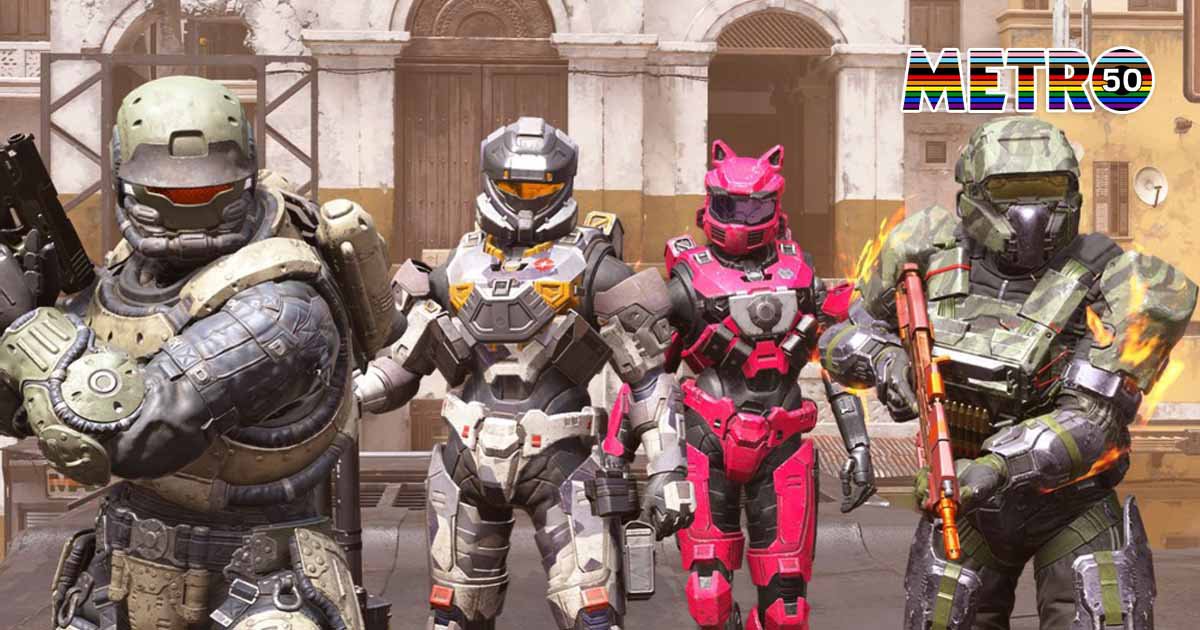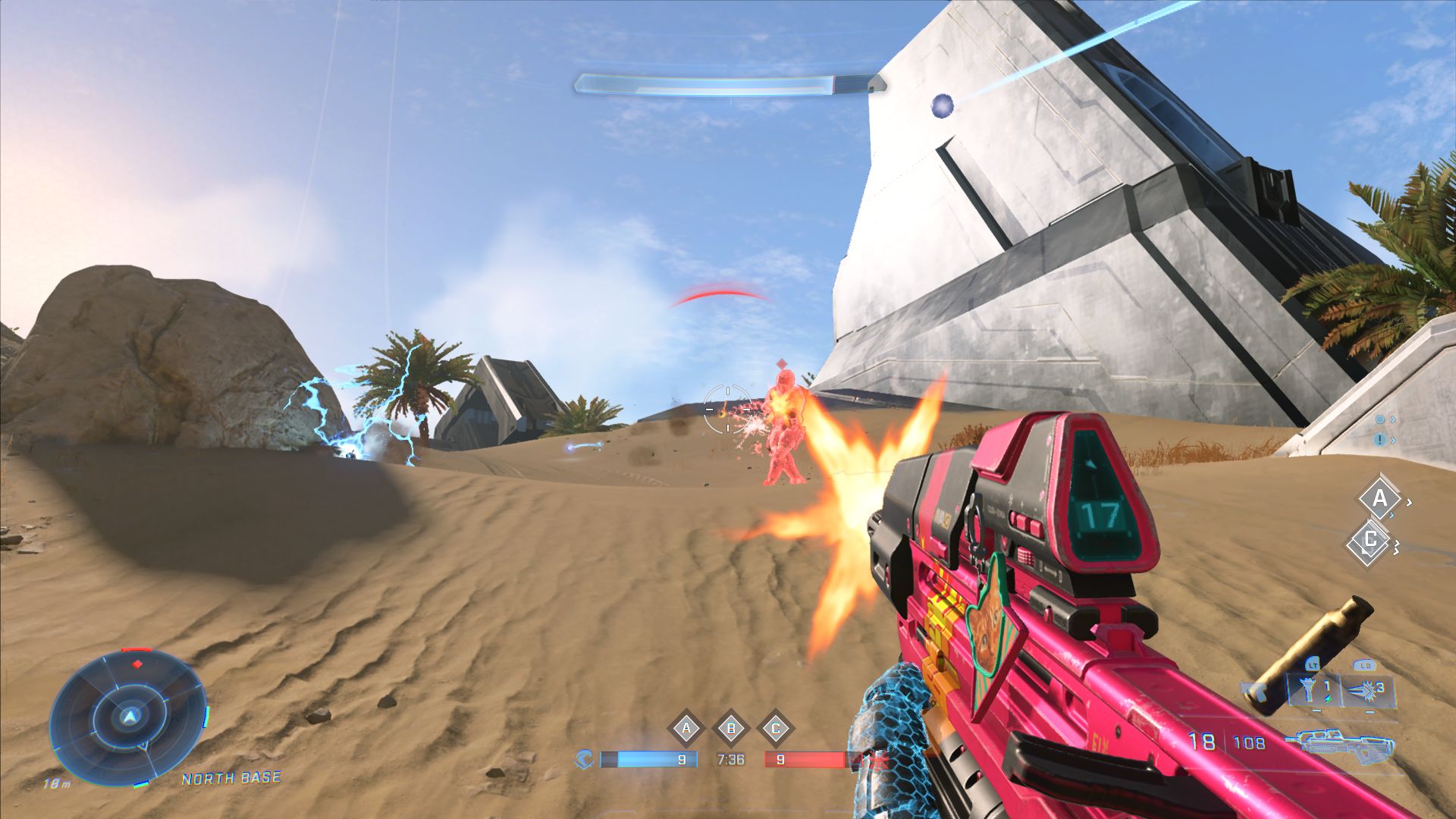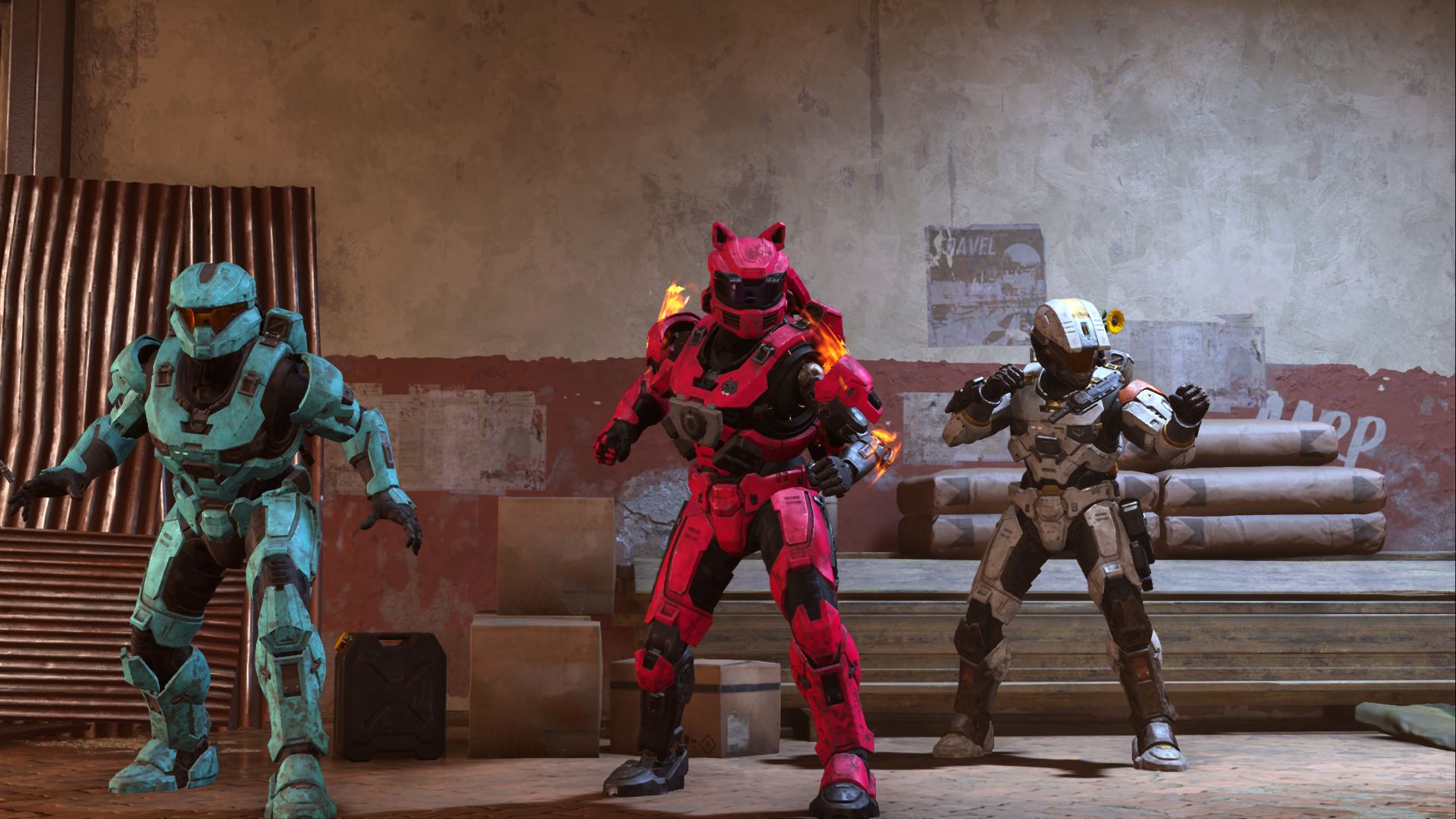
GameCentral’s celebration of Month continues with a look at online customisation options and why Halo Infinite is the most inclusive.
Since I was young, I’ve had a special place in my heart, and gaming schedule, for first person shooters.
In many ways, I’ve grown with them. I’ve watched series like Doom, , and Wolfenstein shift and morph with the gaming landscape, evolving and returning to their roots in cycles of innovation and changing developers. As I’ve grown older, I’ve returned to old favourites like 2009’s : Modern Warfare 2 countless times, surprised to even find online matches still being played. I’ve been able to grow with these games, but as I’ve grown up, and discovered my own queer identity, I rarely ever feel like they’ve grown with me.
It’s no secret that online gaming can be a toxic space. Even now I see Twitter posts bragging about how the tender, soft-hearted plebians of today ‘wouldn’t have survived’ in Modern Warfare 2 or Halo 3 lobbies. They don’t say why, but if you were around at the time, it’s not hard to infer. A decade ago, the online space for gaming was a hotbed of toxic masculinity of the worst kind, filled with garden variety hatred that spewed venom in every direction, always landing on the easiest targets. Racial slurs, homophobia, misogyny, and the like.
These are still fully present in the modern online gaming space, but they’ve become far more ostracised behaviours, met with more pushback from the people they affect and the allies those people have around them.
I didn’t realise how queer I was growing up. I had fantasies of presenting differently, of wearing more bright, colourful, or feminine clothing. When I tried to branch out in school, I was often ridiculed. I don’t want to make it sound like I was harshly bullied; I was well-liked by my classmates, and for the most part I think the jokes were in good humour, or at least that’s what they would say.

It was part of the time I grew up in. Gay was still a derogatory term thrown around without a thought, but nobody ‘had a problem’ if you were gay or presented differently. It was all in good fun. I imagine many of the teens and preteens responsible for the slurs thrown around in those Halo 3 lobbies would say the same thing.
I love online shooters. I love the frenetic action, the reaction time and satisfaction of outgunning and outmanoeuvring another player. I love the rush of working with teammates to dominate an enemy control point or deliver an objective. Then there’s the
But much of the time, they feel limited in their appeal. I know plenty of gay, lesbian, and trans people who play online shooters. I know plenty of Black, Hispanic, and Asian people who play Call Of Duty every year. And while games have broadly gotten better about representing more diverse skin tones in multiplayer-focused titles like Overwatch, Valorant, Call Of Duty, and more, what representation there’s been for queer people feels paltry at best.
The most notable queer rep I can think of is the near-insulting inclusion of Soldier 76 and Tracer in Overwatch as being ‘gay’, a fact referenced only in out-of-game comic books and lore.
To some, this might sound like needless complaining, aimed in no particular direction. ‘What does queer representation look like?’ ‘So you’re saying LGBTQ+ people need to look different?’ ‘Why do you want special treatment?’
I think the answer to all of these questions lies in Halo Infinite.
But first, a brief interlude.
I want to talk about customisation options.
Help us raise £10k for Kyiv Pride and a UK LGBT+ charity
To celebrate 50 years of Pride, Metro.co.uk has teamed up with Kyiv Pride to raise money for their important work in Ukraine.
Despite war raging around them, Kyiv Pride continue to help LGBTQ+ people, offering those in need shelter, food and psychological support.
We will be splitting the cash with a grassroots charity closer to home.
You can donate
Like first person shooters, I’ve been enamoured with customising characters in games my whole life. I remember spending a considerable amount of time selecting my player model in Unreal Gold, where I would play 100-kill bot matches for hours on end. It didn’t matter that I never really saw my character, it mattered that I knew who I was, that I controlled that appearance.
Over the years, as games have descended into microtransactions and other nickel-and-diming practices, customisation options have become more common. Call Of Duty, in particular, has had a wide range of colourful unlocks in its yearly entries, leading to a sharp contrast in player agency compared to games from a decade ago, where the player character model was spawned at random.
Halo, too, has a rich tradition of players unlocking new armour to show off in-game, often relating to special player feats. Bragging rights are the true currency of online social experience, after all.
More often than not, though, the lens of these options is narrow. They may be colourful, but they still see a world where there’s a default brand of ‘badass’. You’ve usually got a variety of skins and colours to choose from, but they eschew ‘softer’ options. There are dozens of options in Call Of Duty games to kit your player identity out with paraphernalia featuring bullets, skulls, weed leaves, fat stacks of cash, and other broad symbols of status and coolness. There aren’t many options if you’d rather show off flowers.
While there are a few rainbows and bright colours thrown in here and there, the options presented pale in comparison to these other ‘default’ selections.
Online shooters play in a sandbox limited by military fetishism and mass market appeal, beholden to what microtransactions are most likely to sell, which is often determined by what has already been selling for the last decade or so. And while the target marketing is finally expanding to meet the diverse audience that’s always been there, it’s been slow to offer anything I’d consider as queer presenting.
That was, until Halo Infinite.

Halo Infinite is a very inclusive game when it comes to customisation. You can play as a Spartan with either AFAB or AMAB (assigned female or male at birth) body types, you can customise voice styles, and even equip your Spartan with a bevy of prosthetic limbs. The characters never remove their mask, sidestepping questions of racial inclusion. Who’s under the mask is never in question this way; it’s you. From there, it’s up to you to present yourself.
Sporting a free-to-play multiplayer, the general unlock model of Halo Infinite has been the . It doles out unlocks at a sparse clip, which feels even more glacial thanks to its unintuitive experience point system, which only grants experience upon completing various daily missions, with quickly diminishing rewards.
But moving past these foundational issues, I found the unlocks themselves, for the first season of content, to be pretty underwhelming. Almost every match you’ll spawn into will feature Spartans clad in some variety of greyish armour. The catch here, is that if you want the cooler armour and more colourful colours, you’ll need to play further into the 100-tier battle pass, which is £7.99. Being a big fan of Halo and finding myself engaged with the multiplayer, I didn’t have a problem buying in, and after completing the battle pass I feel I finally have a multiplayer avatar that represents me.
Every match in Halo Infinite starts with a shot of your team, the camera swinging along a line-up of each player and showing off their custom Spartan’s appearance. As more people unlocked more of the battle pass these Spartans became more varied, but many stayed within a specific mould; lots of greys, lots of samurai-type armour, and lots of tactical bells and whistles on armour pieces, all unlocked through play.
Each time a match would start up, I’d look over these players’ customisation choices. They’re cool. They’re all carefully tailored to look badass, no matter which pieces are mixed and matched. But they still always felt like that default vision of cool, designed to appeal to the supposed majority cis white male audience.
And then there was my character in the line-up. Next to all these virtual gladiators with scuffed tactical supersoldier armour, stands my non-binary Spartan. A female body type, clad head to toe in hot pink armour, featuring a helmet with cute cat ears, and superimposed flames decorating my shoulders. I confess, I did buy the cat ears pack when it was in the shop because it was cute. It was goofy. And it was a nice change of pace from everything else I see in the customisation options. (I’d never wear cat ears in real life, I just think it’s cute in a video game.)
The resulting character, complete with a player emblem featuring pastel hearts, makes me smile each time I look at it. It’s the kind of presentation I’ve grown into being comfortable with as I’ve transitioned: colourful, bold, and proud. All my life, socialised as a male, I was afraid of wearing pink and purple. I love those colours. I’ve been afraid of being goofy and silly for fear of not being seen as masculine enough. I like being goofy sometimes. I used to be afraid of letting people know I was queer, that I wasn’t straight. I’m proud of who I am.
I’m proud of being queer. And now I can play a multiplayer shooter that shows off just how proud I am.
Going back to the questions from earlier, I’m not wanting special attention, and I’m not saying this is how all queer representation should look. The thing about queer representation is that it looks different from person to person. What I think more games should do is simply offer a wider variety of options that go outside the normalised iconography, because in the process it will open up more possibilities for players to choose how they want to be represented.
I’m also not doing this for attention. Just like I don’t wear bright colours in public for attention, or for people to gawk at me; I don’t make my characters that way either. I do it because I enjoy seeing myself, fully realised in a way I’m finally comfortable with. It’s something I’ve struggled with my entire life, both in video games and the real world.
So I’m just glad more games are starting to give me the opportunity to finally see myself in their worlds, so I can be as comfortable in them as I am with myself now.
Jordan Black is a narrative designer and critic. You can find their work on the YouTube channel .
Email [email protected], leave a comment below, and .
Follow Metro Gaming on and email us at [email protected]
To submit Inbox letters and Reader’s Features more easily, without the need to send an email, just use our .
For more stories like this, .
Metro.co.uk celebrates 50 years of Pride
This year marks 50 years of Pride, so it seems only fitting that goes above and beyond in our ongoing support, through a wealth of content that not only celebrates all things Pride, but also share stories, take time to reflect and raises awareness for the community this Pride Month.
MORE:
And we’ve got some great names on board to help us, too. From a list of famous guest editors taking over the site for a week that includes Rob Rinder, Nicola Adams, Peter Tatchell, Kimberly Hart-Simpson, John Whaite, Anna Richardson and Dr Ranj, we’ll also have the likes Sir Ian McKellen and Drag Race stars The Vivienne, Lawrence Chaney and Tia Kofi offering their insights.
During Pride Month, which runs from 1 - 30 June, Metro.co.uk will also be supporting , a Ukrainian charity forced to work harder than ever to protect the rights of the LGBTQ+ community during times of conflict. To find out more about their work, and what you can do to support them, click .

























